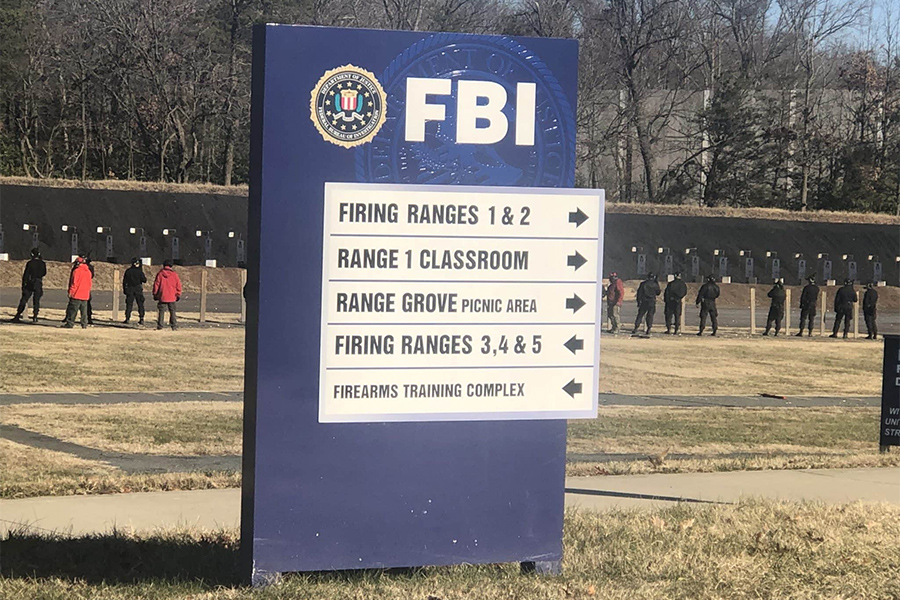
The federal government has a long, proud history of arming people who commit violent crimes. Sometimes it’s intentional as it was during the Obama era Fast and Furious program when the ATF shipped weapons to the Mexican cartels. Sometimes it’s due to basic stupidity and negligence as it was when a BLM ranger left his gun in his car in San Francisco where it was stolen. It was later used to murder Kate Steinle.
Sure, these are awkward and make for some bad PR cycles, but as far as the Gun Control Industry and anti-gun politicians are concerned, these incidents aren’t without their own silver linings. They use high profile failures of the government and the actions of criminals that result to demagogue against civilian gun ownership in order to further ratchet up gun control restrictions and put more limits on the rights of law-abiding Americans.
That’s a wn-win!
The latest example comes to us from our friends at the FBI and DEA. It seems that parts from a number of their retired duty weapons — firearms that were supposed to have been destroyed — have later turned up in “ghost guns.” In other words, someone in the FedGov is making a little fishing boat money by appropriating gun parts and selling them, sometimes to criminals.
As Paul Bedard at the Washington Examiner reports, the missing parts were revealed as a result of a recent audit . . .
Both agencies were accused of poorly securing critical pistol parts that could easily be taken by anyone inside the Federal Bureau of Investigation and Drug Enforcement Agency training academy at Quantico, Va. in recent years.
“We concluded that inadequate policies regarding the destruction of employee issued firearms create significant risks that firearms or their parts could be lost or stolen and used in subsequent crimes without accountability,” said the advisory memo from Justice Department Inspector General Michael E. Horowitz to FBI Director Christopher Wray and DEA Administrator Anne Milgram.
The issue was discovered last year when an unidentified suspect was arrested with a “ghost gun,” which is typically made from kits that in the past didn’t require a background check or registration.
Pistol parts, aside from frames, aren’t usually serialized, so it isn’t clear how the origin of the parts was discovered, but…
While it investigated the case, the DEA realized that the barrel and slide came from a DEA gun that was to be destroyed in 2019. “According to DEA records, the slide and barrel were part of a DEA employee issued firearm that had been destroyed over three years earlier,” said the memorandum.
Except that it obviously wasn’t destroyed, at least not entirely.
In conducting its inquiry, [Justice Department Inspector General Michael E.] Horowitz discovered that the parts likely came out of unsecured barrels that both law enforcement agencies used to store the parts of employee guns to be destroyed.
The report said that virtually everyone who worked at Quantico had access to the “gun cleaning room,” where the pistol parts were stored in open barrels.
So the Fibbies and DEA have a big bin full of pistol parts in Virginia that pretty much anyone there can sift through. Can regular civilians get access to that parts stash? We paid for them, after all. Never mind. We know that answer to that question.
Back here in the real world, where federally-employed law-breakers are held accountable about as often as Kamala Harris’s campaign claims are fact-checked by the media, you’ll be utterly gobsmacked to learn that . . .
“Indeed, in the investigation that led to this memorandum, the OIG was unable to identify the individual or individuals who stole the DEA slide and barrel that were later recovered during an arrest,” Horowitz wrote in the memo.
But don’t worry. We’re sure this won’t happen again because both agencies have assured the inspectors that they’ve tightened up their non-existent security procedures.
So don’t worry about this, okay? Go watch a football game or something Move along. There’s nothing to see here.


It’s slimy, but it isn’t nefarious.
Legally, the serialized frame is the gun, so that gets cut up and the remaining parts are bagged and sold as a ‘parts kit’, much the same way Sten sub-machineguns were sold for75 bucks back in the 1980s.
And with Polymer-80 80-percent kits being sold again after the SCotUS case is concluded next June, that’s going to be an agreeable way to put together a Glock clone, with OEM Glock parts, slide, and barrel.
As far as I’m concerned, every gun ordered to be destroyed should be dealt with that way…
The cited article noted that the guns to be destroyed were not ones from crimes, etc., but were “employee issued firearms.”
That’s right. When the feddies upgrade, instead of recouping some of the cost by selling the used guns (most of which probably haven’t been fired except during training and annual qualification) to someone like GT Distributors (who then resells them to the public or other LE departments), or perhaps send them to the CMP, our government is instead destroying them.
Complete (and intentional) waste of taxpayer purchased property. Because gunz.
H’mm.
Lawsuit challenge time?
What’s the basis for a lawsuit? If waste / incompetence were grounds for a citizen lawsuit against the feddies, every agency out there would be slammed.
Only potential avenue I can see is if there is some federal law / regulation governing the disposition of surplus federal property. But the problem is that I doubt there is a private right of action to enforce it.
Feds crushed two 95 Japanese market Nissan GT-Rs that were five years short of the magical 25 year import rule. One of them was an iconic car from the movie The Fast and the Furious. Obviously, they could have sold them to an out of the country buyer. But the feds wanted them crushed because reasons.
“Pistol parts, aside from frames, aren’t usually serialized, so it isn’t clear how the origin of the parts was discovered, but…”
Glocks have the same serial number applied to the frame, slide, and barrel. Only the frame is designated as “the gun”, so as long as the frame gets destroyed, legally “the gun” has been destroyed. But the barrel and slide are the most expensive parts of a factory Glock, so it’s not surprising that those parts are showing up on the black/gray market if they are not being secured at every point of their trip to be destroyed.
Are we sure it was just the barrel and the slide, and not.. you know, the whole freaking gun?
The top leading criminal thing found at gun crime scenes is the ATF.
The end result of pursuing workforce ‘diversity’ at any cost, is the complete absence of any sort of standards in hiring said diversity.
The liberals want law enforcement to be the only people with guns. Near as I can tell, law enforcement should be the last people that are armed.